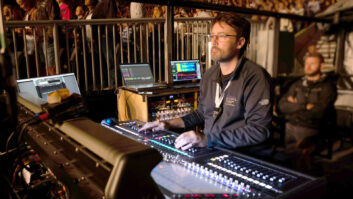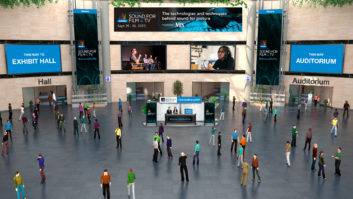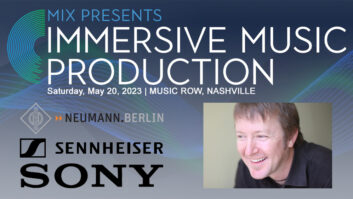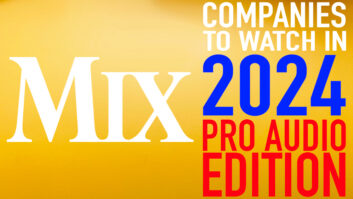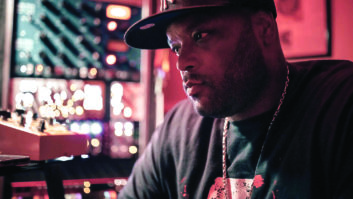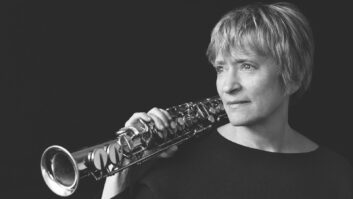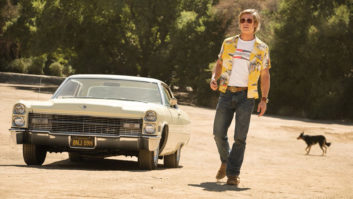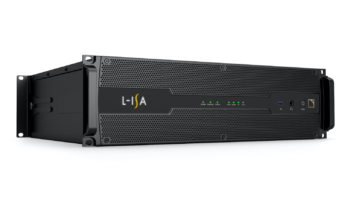
San Francisco, CA—Since the launch of Dolby Atmos with Disney/Pixar’s animated feature Brave nearly eight years ago, Dolby has expanded the application of its object-based immersive sound format to streaming content, VR, games and, most recently, music, in partnership with UMG and Warner Bros. Now the company is pushing its Dolby Atmos Music brand into live music venues.
“We’ve been working with artists, record labels, streaming services and device manufacturers to enable the Dolby Atmos Music experience as broadly as possible,” says Jed Harmsen, Dolby’s vice president of cinema and content solutions. “Our goal with the new Dolby Atmos for Live application is to provide a live out-of-home experience that is more engaging and more immersive.”
Hitting rewind is not an option when delivering a Dolby Atmos experience in a live setting, of course, so to fine-tune the product for live use, the company has been implementing Dolby Atmos at a variety of events, gathering experience, data and user feedback along the way.
Dolby’s initial public foray into using Dolby Atmos in a live application was the American Music Awards at the Microsoft Theater at L.A. Live in late 2019. Working with Dick Clark Productions, Dolby presented performances of individual songs by Dua Lipa, Lizzo and Post Malone in its immersive format. “The response was well beyond what I expected,” says Harmsen.
During Grammy Week in February, Dolby went a step further, delivering a full performance by rapper Meek Mill at NeueHouse Hollywood, presented by Tidal. At more or less the same time, the company worked with Carlos Santana to present his residency—now in its eighth year—at House of Blues Las Vegas at Mandalay Bay Resort and Casino in Dolby Atmos.
“We’re really focused on these fixed venues, where we provide the room design, the renderer and the tools—the user interface—to make it work,” Harmsen explains. “The reason is twofold. One, the rooms are generally more controllable than an outdoor arena, to pick one extreme.” Secondly, he says, “We can learn more in a fixed venue, where we get to see different artists use [the system],” versus a tour by one artist in multiple venues.
That course of action also affords Dolby the additional days needed to expand a venue’s stereo sound system and optimize it for Dolby Atmos presentations. That process can certainly be challenging at a venue such as House of Blues Las Vegas, where more of the audience is in the seated mezzanine area than downstairs on the floor, and the room has an unusual shape and layout.
“How do we provide that experience both on the floor and the mezz area to give as much of the venue an optimized experience as possible, and in doing so, be cognizant of sightlines? It’s easy to solve if you hang an infinite number of speakers, but then no one gets to see the act. I think we came up with a really elegant solution to provide that coverage,” says Harmsen. Dolby worked with Sound Image to expand the venue’s sound system for the Santana residency, which currently has dates scheduled in May, September and November.

While all elements of a traditional stereo P.A. are typically time-aligned, that’s not necessarily best practice with a Dolby Atmos system, he continues. “If everything is perfectly time-aligned and you pan, you’re not going to get the sensation of panning. You want to ensure the overall production is cohesive, coherent and consistent. But we want to ensure that when the creatives choose to pan elements or add static objects, you notice that effect and it’s not getting washed out by the time alignment.”
There is a learning curve when first mixing in Dolby Atmos, as Kevin Madigan, Santana’s FOH mixer since January 2019, observes: “You don’t have a left-right bus to send to anymore. That changes things quite a lot.”
The flipside is that assigning elements of the mix as objects offers the mixer a set of tools to be even more creative or to overcome challenges. Madigan assigned audio groups rather than individual inputs as objects. “The SD5’s capabilities were certainly put to work,” he says. “With everything going on, I was up to 41 stereo groups. It’s the most complicated DiGiCo session I’ve ever written.”
Santana’s percussionists at stage right and left can occupy a lot of real estate in a stereo mix, but Atmos enabled Madigan to widen the soundstage. “Being able to push those wide and along the side walls is a cool and unique thing,” he says.
To achieve even greater separation, he says, he could send individual elements to separate speakers. “That makes things easier to deal with instead of trying to do it with master bus compression and EQ and carving out space.” Plus, because the high-frequency content of the percussion can be easily localized by the listener, “a little movement in those elements is very obvious,” says Madigan.
Similarly, he says, he could bring guitar solos into the room. “I wasn’t doing fader pushes to bring guitar solos out. It was just a movement change that brought it forward and out of the mix.”
As for getting creative, Dolby Atmos enables a mixer to give the audience an experience a stereo rig simply can’t deliver. “Being able to do a rotation with a B2 and Leslie solo is really cool,” he reports.
Yet Madigan’s overall philosophy was to create a generally static mix. “You could do dramatic things that were interesting for the audience, but Carlos and the band are the focus. You don’t want to do anything that distracts from that.”
Dolby’s software panner, which is also used in post-production applications, generates the dynamic spatial positioning metadata for each object in the renderer. Looking down the road, that control, currently in “advanced beta” for live use, will likely become more tightly integrated into third-party products.
In the meantime, Dolby is learning from its interactions with mixers how best to optimize the software for live musical and theatrical performances. “We want to make sure that our solution set covers all the bases, while still being flexible and easing the creation process. We want to be able to cover all the bases with a single solution set, but make sure it’s still approachable and not too difficult to implement,” says Harmsen.
Dolby Atmos Music • music.dolby.com
